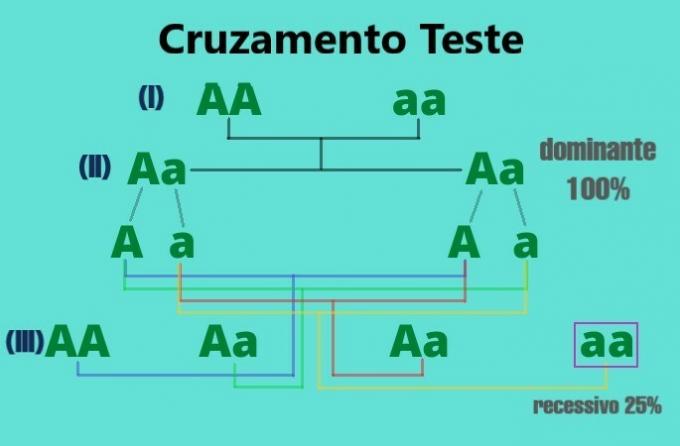The dominant term is related to the genetic transmission of a characteristic and is represented, in biology, by a capital letter (A, B or V). While recessive, represented by a lowercase letter (a, b or v), they represent genetic characteristics transmitted only in the absence of the dominant gene.
Alleles are pairs of genes that occupy the same locus on the DNA strand. This formation occurs through the genetic crossing between two individuals of the same species, called progenitors ("father" and "mother").
The gene is a stretch of DNA of a cell that has the function of transmitting information. This information is found in the genotype (genetic constitution) of the individual, presented in the phenotype (genetic constitution and its interaction with the environment).
These pairs can be formed in three ways:
- AA (homozygous dominant);
- Aa (dominant heterozygote);
- aa (homozygous recessive).
| Dominant | recessive | |
|---|---|---|
| Concept | Genes that transmit hereditary characteristics, regardless of how the allele is formed. Thus, dominant genes will always manifest their traits. | Genes that are hidden/inactive (recessive) in the presence of another dominant. They only manifest their characteristics when combined with another recessive gene. |
| Formations |
|
|
| Examples |
|
|
| genetic diseases |
|
|
The discovery of these genes was the work of scientist Gregor Mendel (1822-1884), who performed the cross test between plants and defined that the characteristics present in the individuals come from your
What are dominant genes?
The dominant genes are those that define the characteristics presented in the phenotype even when united with another dominant or recessive gene:
- Homozygous - AA, BB, VV
- Heterozygous - Aa, Bb, Vv
Dominant genes can organize themselves in two different ways. As they dominate and are responsible for the apparent characteristics in the phenotype, they can be present in the DNA chain as homozygous allele genes (two dominant genes together) or heterozygous allele genes (one dominant gene and one gene recessive).
What are recessive genes?
Recessive genes are those that are hidden when paired with dominant genes. For a recessive hereditary trait to be apparent in the phenotype there must be a pair of recessive genes.
Thus, only homozygous allele genes (aa, bb, vv) show apparent characteristics in the phenotype.
In general, traits derived from recessive genes will show less expression than dominant traits. For example, only 10% of the world's population is left-handed or 2% have red hair.
Some scientific studies point out that natural blonde hair, the result of recessiveness, can disappear in about 200 years.
What is a Mendel testcross?
Mendel sought to analyze the transmission of hereditary characteristics. To do so, he performed a test cross on a pea species that had two distinct phenotypes: yellow pod and green pod.
From this cross Mendel noticed that the yellow trait of the pea was dominant. When crossing a homozygous yellow pea with another homozygous green the result was always yellow peas.
This is because in this case the possible associations are always Aa. Already in the third generation, the crossing would allow the appearance of green peas in 25% of the cases, as shown in the image:

See also the difference between:
- genotype and phenotype
- gene and allele
- Homozygous and heterozygous



